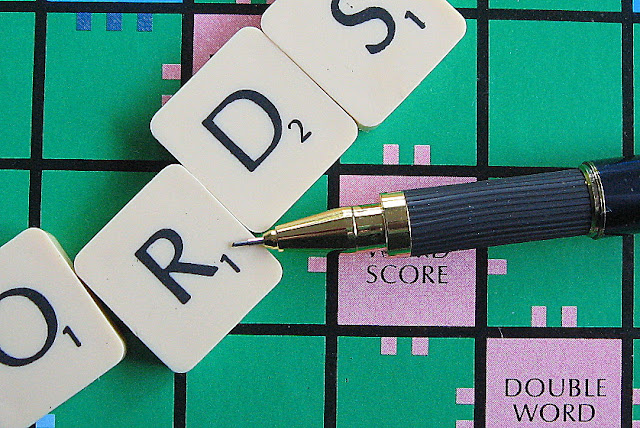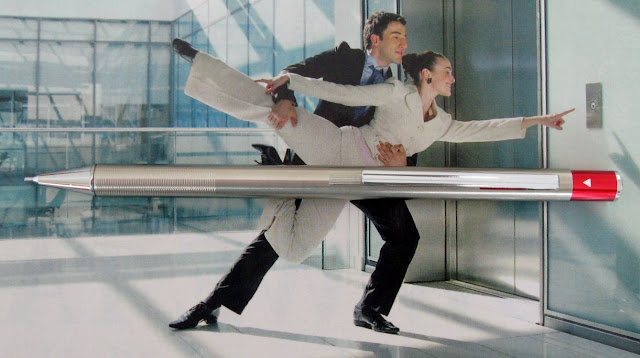Time and tide, they wait for no man.
The clock ticks for mechanical pencils too.
Warning – Disturbing Content.
Readers of a delicate disposition may require emotional guidance and support. Please be seated before continuing on.
One thing is for sure, none of my pencils are getting any younger, and some of them are not aging well. Collectors of vintage pens and pencils are well used to corrosion, tarnishing, brassing, flaky plating and all manner of metallic ills, as well as shrinkage, cracking, hardening and so on of rubber and plastic. The moment a new mechanical pencil is manufactured it starts its journey to becoming a future vintage pencil… if it survives that long.
As well as restarting this blog I have also recently been reviewing my collection with the goal of rationalizing it to the things I really like. This review of my collection has made me realize just how much degradation is going on, and so I share with you some sad stories and sorry sights.
My first encounter with aging of a modern pencil was a while ago my
Sensa Carbon Black Mechanical pencil.
After about 5 or so years in storage I noticed that the plasmium grip was deforming under the force of gravity. The plasmium gel was being dragged down by gravity and pooling on the lower side of the grip. After another few years droplets of oily liquid started to form on the outside of the grip as if some liquid was migrating through the outer skin of the grip. Eventually after 10 years or so the outer grip skin was very tacky and the gel pimples burst with gel oozing out of the little tears. Sensa had ceased business, and it’s doubtful they would accept any warranty claim after such a period, so my sticky oozy Sensa pencil went into the rubbish bin. That was a fair few dollars gone.
My next encounter with modern aging was much more disturbing.


I really liked my Lamy Dialog 1 ballpoint pen. I always meant to get around to reviewing it but never did. After about 7 years I noticed some discolouration on the body. Small dark spots, that you could feel with your fingernail. The Dialog 1 is
Titanium PVD coated metal and somehow the titanium coating seemed to be corroding, which seemed implausible. Some research into
PVD coatings did reveal that the thin coatings used on decorative objects like jewelry are “porous” and much thicker coatings are required for maximum corrosion resistance. I don’t know what’s going on with my Dialog’s coating, whether it’s some sort of poor metal substrate cleaning at the time of coating, coating porosity, or biological attack from a microorganism that has got into the metal structure through the so called porosity. In any event my Dialog 1 is no longer an attractive premium writing instrument. Lamy customer services have been silent.
 |
| So annoying! |
PVD coatings are very thin and the forums of jewelry and watches have many stories of how they wear off so I was not keen to try any metal polishes on the titanium finish.
Here’s another disappointing one that hasn’t lasted. Ten years ago when I got it, this
Platinum Mistake Double Action multi pencil was white, but now it is a creamy yellow, and I can assure you it has been stored in the dark, away from sunlight and UV. You won’t be able to see them in the picture, but the lower half of the body also has two hairline cracks starting along its length.
Now for the biggie. When I started this blog I declared my
dislike of rubber grips, but constant contact worked like some sort of psychotherapy and I came to begrudgingly accept them. That was a mistake, I should have stayed a hater. If you go searching the forums of camera, optics, hunting and nautical people you will come across lots of discussions about rubber coated and rubber armoured cameras, binoculars, telescopes, rifle scopes and the like, going all soft and sticky over time. Then there’s the kitchen utensil, mobile phone, IT and gaming forums… it’s a sticky gooey rubbery mess out there. I too have experienced this with my reputable Japanese brand telescope's rubber armour becoming a soft sticky mess over a 10 – 15 year period.
Bushnell optics even has a FAQ for your binoculars going all sticky, and requests that you contact them. Basically with natural rubber it is a process sort of like it returning to its original latex gel liquid state, and a similar degradation process with many synthetic rubbers. Complex long chain molecules break into smaller sections, plasticizers and lubricants migrate to the surface and so on. Anyway, there’s nothing you can do about it, it just happens, although the circumstances of use and storage can affect the timescale.
Down in my mechanical pencil storage department you don’t have to look too far to find a soft sticky wet feeling rubber grip. There is a vast range of different service lives for different synthetic rubbers. From my experience, ten years seems to be about the average time for degradation becoming obvious. If you don’t see any changes after 10 years then it is probably one of the silicone or other synthetic rubbers with extremely long service lives.
Here’s two
Faber-Castel Grip Plus mechanical pencils, both obtained 12 years ago at the same time, both stored side by side in the same container. Visually they look nice, but when you pick them up one rubber grip is noticeably sticky and leaves a residue on your fingers. The other is much less tacky and does not leave a residue but is clearly starting to degrade like its cousin. Of course who knows what their actual date of manufacture was.
Maries Leadholder only lasted a couple of years in my office drawer before it started becoming disgustingly sticky and I relocated it to the rubbish bin.
To be fair, most of the rubber gripped writing instruments are in the economy and low price range brackets, so the manufacturers probably only think of them as needing to last a few years, and they certainly would not be thinking about future classic vintage pencil status.
Related to this rubber issue is the degradation of presentation cases. PVC is a very common and useful hard plastic used to make all sorts of things including roof gutters, house cladding, LP records and helmets but if you add plasticisers to it, it becomes very flexible and we then often start calling it vinyl and making erasers, clothing, furnishings and so on. The thin flexible vinyls tend to breakdown over time and some seem to become susceptible to biological attack from mould. I imagine it’s related to the particular plasticisers and additives used in the plastic formulation.
Here is my
Pilot KICPA case. It was very slightly tacky when I first bought it, but now things have gone further. It is still only slightly tacky to the touch, but the case is a very strong spring loaded one and you have to grip it quite firmly to open it, which means you press the soft plastic covering, and sometimes the vinyl or PU or whatever plastic it is sticks to your fingers and comes off its fabric backing.
One thing of genuine concern though is that virtually all mechanical pencils with a ratchet lead advance system have some form of lead retaining rubber ring or similar at their tip. Let’s hope that they use one of the good quality very long service life rubbers for that!
And if you think I am getting bent out of shape over all of this, at least I’m not like the old floaty pens from the 70’s or so. Virtually every one of them I have seen in real life is bent to one degree or another. Releasing moulded in stress over time… all those floaty
ships, cars and beautiful ladies… all warped.

































